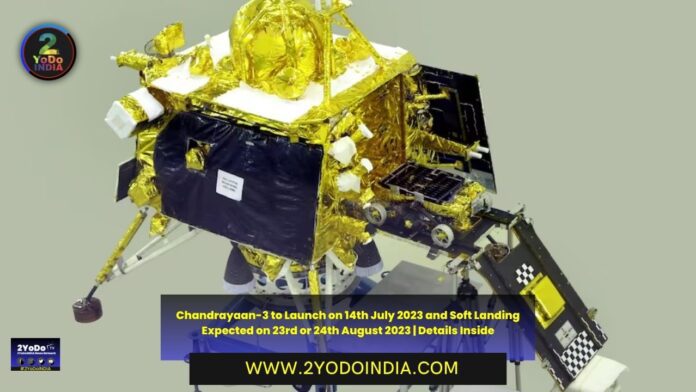Indian Space Research Organisation announce that the Chandrayaan-3 mission is schedule to be launch at 2.35 pm on 14th July 2023 and the lander expect to soft-land on the surface of the Moon on 23rd or 24th August 2023.
Chandrayaan-3 is a follow-on mission to Chandrayaan-2 to demonstrate end-to-end capability in safe landing and roving on the lunar surface.
The Chandrayaan-3 spacecraft, which will be launch by LVM3 (Launch Vehicle Mark-III) (earlier refer as GSLV Mk III), is a composite of three modules, propulsion, lander, and rover, which is inside the lander.
Secretary of the Department of Space and ISRO Chairman S Somanath said that the space agency would attempt soft-landing of the lander on 23rd August 2023 or 24th August 2023.
Announcing the launch of Chandrayaan-3:
— ISRO (@isro) July 6, 2023
🚀LVM3-M4/Chandrayaan-3 🛰️Mission:
The launch is now scheduled for
📆July 14, 2023, at 2:35 pm IST
from SDSC, Sriharikota
Stay tuned for the updates!
ISRO officials said that the mission life of the lander is one lunar day, which is equal to 14 Earth days.
As per ISRO :
“The date (for soft-landing) is decided based on when there is sunrise on the Moon. While landing, sunlight must be there. There is sunlight on the Moon for 14-15 days and for the next 14-15 days there is no sunlight,”.
Chandrayaan-3 mission carries scientific instruments to study the thermo-physical properties of the lunar regolith, lunar seismicity, lunar surface plasma environment and elemental composition in the vicinity of the landing site.
And the scope of these scientific instruments on the lander and the rover would fit in the theme of “Science of the Moon“, another experimental instrument will study the spectro-polarimetric signatures of the Earth from the lunar orbit, which would fit in the theme of “Science from the Moon“, as per ISRO officials.’.
In March 2023, the Chandrayaan-3 spacecraft successfully complete the essential tests that validate its capability to withstand the harsh vibration and acoustic environment that the spacecraft would encounter during its launch.
The propulsion module, which has Spectro-polarimetry of Habitable Planet Earth (SHAPE) payload to study the spectral and polarimetric measurements of Earth from the lunar orbit, will carry the lander and rover configuration till 100 km of lunar orbit.
Lander payloads are ‘Chandra’s Surface Thermophysical Experiment‘ to measure the thermal conductivity and temperature, ‘Instrument for Lunar Seismic Activity‘ for measuring the seismicity around the landing site, and ‘Langmuir Probe‘ to estimate the plasma density and its variations.
A passive Laser Retroreflector Array from the US space agency, National Aeronautics and Space Administration (NASA), is also accommodate for lunar laser ranging studies.
Rover payloads are ‘Alpha Particle X-ray Spectrometer‘ and ‘Laser Induced Breakdown Spectroscopy‘ for deriving the elemental composition in the vicinity of the landing site.
The lander will have the capability to soft-land at a specified lunar site and deploy the rover which will carry out in-situ chemical analysis of the lunar surface during the course of its mobility.
The main function of the propulsion module is to carry the lander module from launch vehicle injection till final lunar 100 km circular polar orbit and separate it.
And the propulsion module also has one scientific payload as a value addition which will be operated post separation of the lander module, as per note.





